While most of the time snails are a friendly (dare I even say cute) creature, sometimes they can be too much for gardeners. Cabbage-loving pests, snails can do quite a bit of damage if they have great enough numbers. But most of the time, they’re simply just part of the garden’s ecosystem. Learn if snails are the problem in your garden and if so, how to get rid of them.
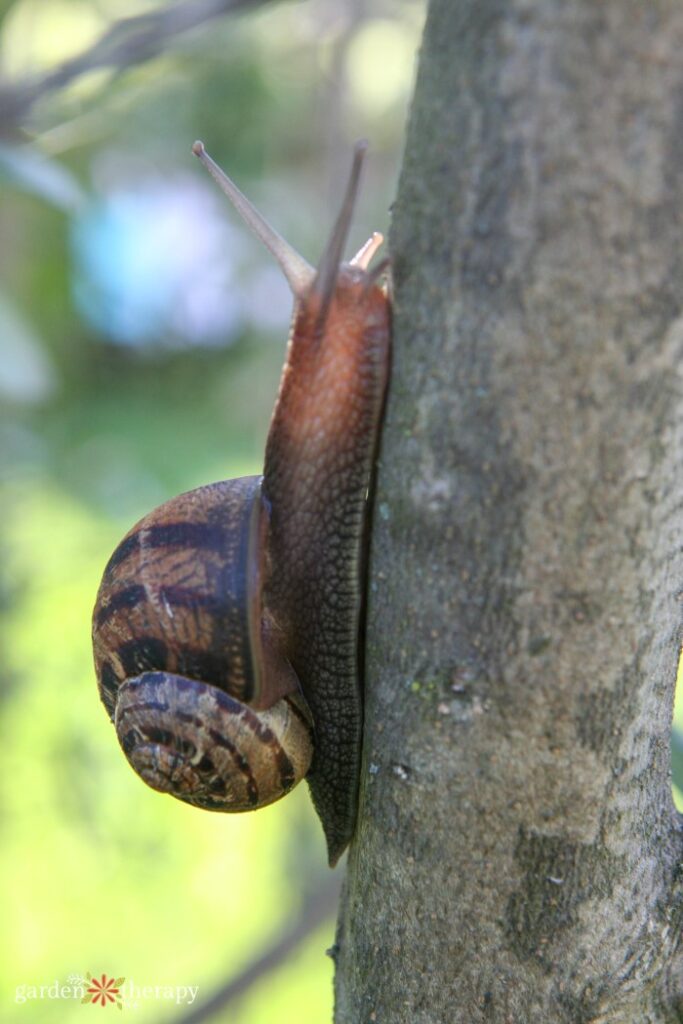
Slugs have always seemed a little icky to me. But once you plop a shell on them and call them a snail, suddenly they’re endearing little creatures. Every now and then I spot them in my garden and I always consider it a sign that my garden is brimming with all kinds of wildlife.
But are snails the ones causing issues for your garden? Below I’ve listed some signs of snail damage and how you can get rid of the mollusk from your garden. I’ll leave it up to you to decide whether or not you think the snail is a friend or foe.
All of the methods listed in terms of pest control for snails are 100% natural. While you can use pesticides and slug and snail bait, this can be toxic to other good insects as well as animals who may stumble across them. These natural methods are very effective, trust me!
This post will cover…
- Meet the Garden Snail
- Life Cycle of Snails
- What Do Snails Eat?
- How to Get Rid of Snails in the Garden
- Habitat Reduction
- Hand Pick Snails
- Change Your Watering Habits
- Set a Snail Trap
- Make Your Garden Not Snail Friendly
- Copper Barriers
- Frequently Asked Questions About Garden Snails
- More Posts About Garden Pests
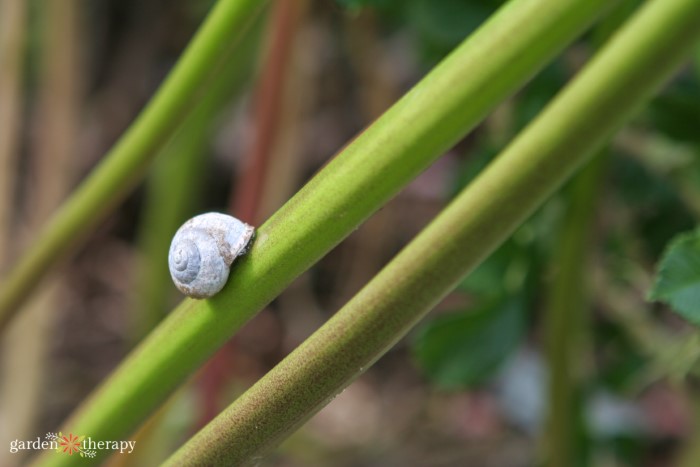
Meet the Garden Snail
Small and big, water or land, there are so many snails out there you may encounter. In the garden, you’re most likely to see the brown garden snail, a type of terrestrial gastropod mollusk (that’s a fancy term for land snail).
They’re also known as the European brown snail, the Cornu aspersum is native to the Mediterranean but can now be found in all continents except Antarctica. That’s all thanks to globalization and the trading of goods!
As baby snails, they often start as translucent before turning slightly blueish. Upon reaching adulthood, they turn a brownish colour. They have soft bodies that are protected with yellow or cream shells with brown stripes. Just like a tree, the rings on the shell help determine its age.
When it senses danger or isn’t being all that active, it can retract into its shell. On the bottom, they produce mucus which helps them stay moist as they travel across dry ground and protect their skin from sharp objects.
Of course, these guys aren’t known for their speed. The fastest they’ve been recorded at is 1.3 cm a second. As far as potential pests go, they’re one of the least intimidating.
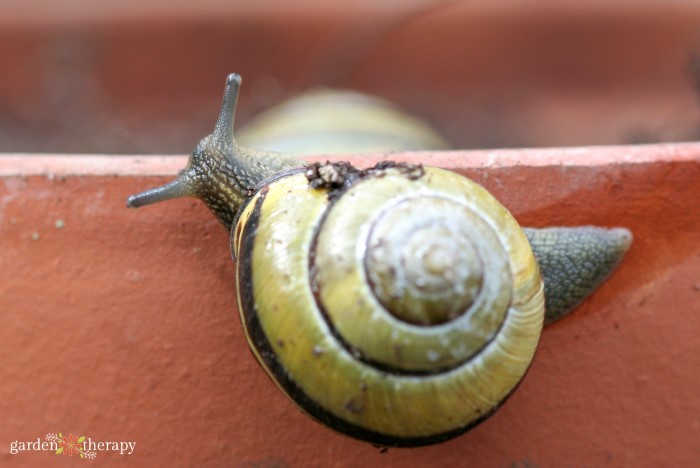
Life Cycle of Snails
You may be surprised to know how old that garden snail is in your backyard! Most snails live 2-7 years in the garden. And like many of us, they start off as eggs.
Many land snails are hermaphrodites, meaning that one snail has both male and female reproductive organs. Rather than self-fertilize, most snails will copulate with one another.
Through courting rituals, they find mates by expelling chemicals. During mating, the sperm enter the other snail to fertilize the eggs. They can hold onto this sperm for years if they choose.
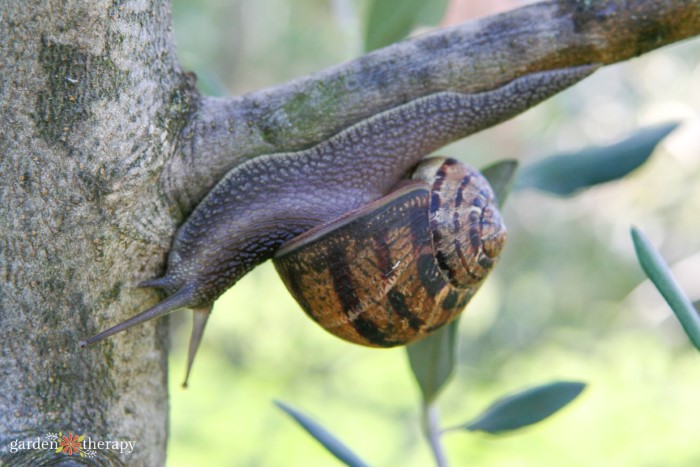
Both snails can then deliver a set of eggs. They lay the snail eggs in a nest in a hole in the ground or amongst vegetation. At one time, they lay around 100 eggs. Snail eggs are usually white and come coated in a viscous layer for protection. Teeny tiny, they’re 3-6 millimeters in diameter.
After two weeks to one month, the baby snails will hatch with a softshell. As the snail gets older, the shell will continue to grow. The translucent body of a baby snail will also get darker as it grows.
Snails can enter a period of lethargy. In the summer, this process is known as estivation, and in winter as hibernation. During this process, they retract into the shells and excrete a layer of mucus to close the opening and protect their bodies.
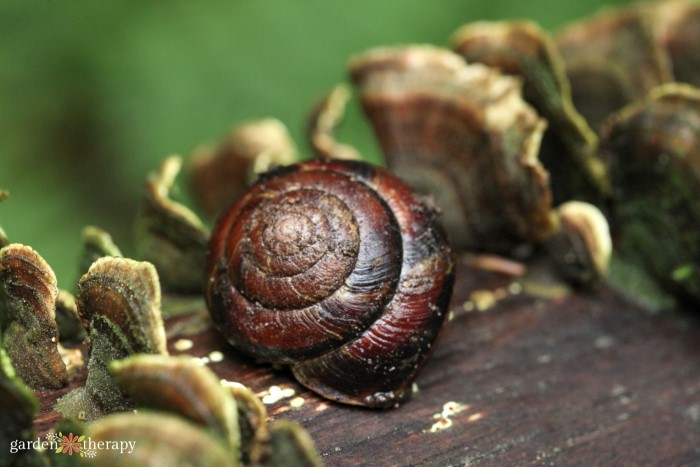
What Do Snails Eat?
In some areas where it doesn’t belong, it has turned into a pest for crops and home gardens. In California in particular, they’ve been known to damage crops and also hide out in container-grown plants to be shipped to other areas of the country.
Mostly herbivorous, snails eat fruits trees, herbs, cereal crops, flowers, and tree bark. Sometimes they eat decaying plant or animal materials. But what they like the most certainly are tender seedlings.
Like slugs, they have a set of microscopic teeth known as radula to eat their food. They eat holes in the middle of leaves, devour seedlings altogether, and take a gander at low-hanging fruit like strawberries and tomatoes. They are especially notorious in the spring.
Since they’re nocturnal, it can be hard to know if snails are the culprits in the garden. You can look for them at night with a flashlight, on a rainy day since they like the moisture, or in the early morning while it’s still cool.
How to Get Rid of Snails in the Garden
If snails have started their conquest of your garden or precious vegetables, they’re a fairly easy pest to get a handle on. With a little bit of patience and diligence, you can round up quite a few snails and change your garden to prevent them from coming back.
Habitat Reduction
The first thing you should do is take a look at your garden and ask yourself why snails love it so much. Chances are, they are loving the shady, moist parts of your garden. In these areas, you can remove anything they might like to hide under. This includes boards, logs, large stones, plant debris, and low-hanging branches.
Trim your shrubs and trees so that they have minimal underbrush and suckers. Remove any kind of debris such as leaves to another area of the garden unaffected by snails. The fewer things you have on the ground for the snail to hide or enjoy eating, the better.

Hand Pick Snails
It may seem obvious, but you can go right ahead and pluck the snails off of your plants. While you certainly won’t catch them all, you can make a dent by doing this frequently. Go in the early morning while it’s still moist out or in the evening with a flashlight. Dispose of the snails in warm soap water.
Change Your Watering Habits
Since snails like areas with lots of moisture, you want to try and dry things up as much as you can without harming your plants. Stop watering as often if possible or consider switching to drought-tolerant plants in the snail-infested area.
Switching to drip irrigation can limit the amount of water used at one time. Watering by hand at the base of the plant also helps.
Set a Snail Trap
Like slugs, snails will fall for a beer trap. Since they love the smell of the fermentation, snails will be attracted to beer laid in a container in the garden. Dig it in the ground so it’s easy for the snails to get into. They will go in the container and drown in the beer.
Make Your Garden Not Snail Friendly
Snails have soft and delicate bodies and like to stick to smooth surfaces to protect them. You can add sharp and pointy objects as protective barriers to your garden.
Gravel, wood chips, sand, and eggshells are all difficult for snails to crawl over. Some also say coffee grounds work.
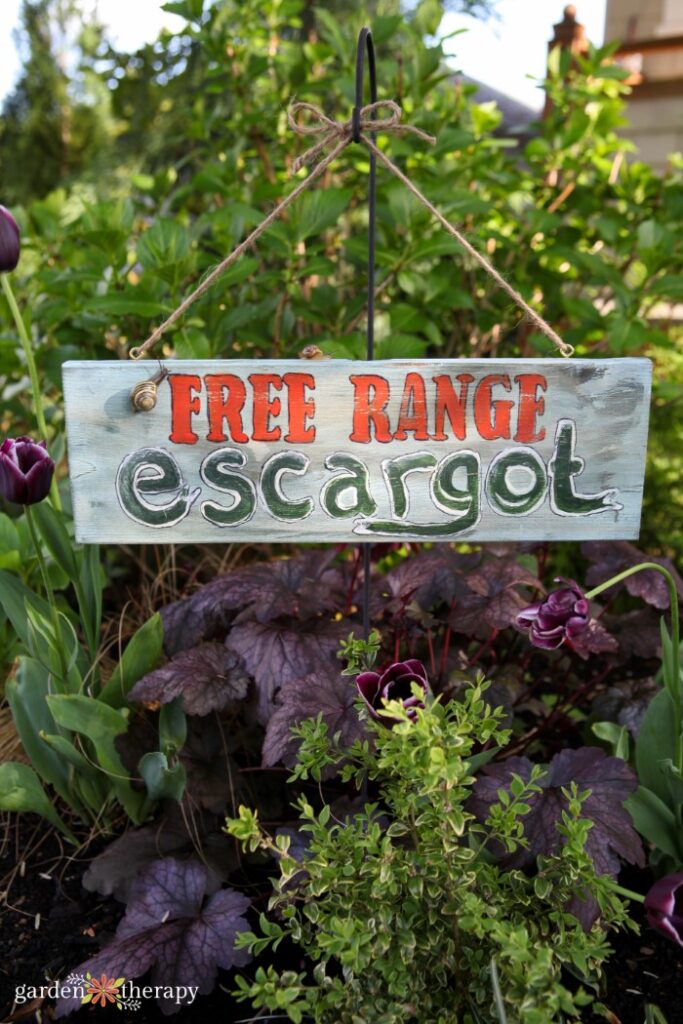
Copper Barriers
Copper reacts with the mucus of snails and slugs, actually giving a slight shock. At garden centres, you can find copper sold as strips to wrap around the base of tree trunks and shrubs. You can also use it for containers or other small gardens.
Frequently Asked Questions About Garden Snails
Every insect has their place in the garden. While they do munch on plants, they also help to clean up plant debris and can even eat pest eggs. They’re also part of the food chain, eaten by birds, lizards, toads, and small mammals.
Having them in your garden means there’s enough food to go around for all. Plus, they’re pretty darn cute so I don’t mind seeing one crawl around my garden.
In the wild, you can see snails live anywhere from one to ten years, although the average is more often two to seven years. In captivity, this number can go up to 25 years.
Snails are hermaphrodites with female and male reproductive organs. They do not self-fertilize however and rely on another snail to reproduce. When mating, sperm will enter another snail to fertilize the eggs. Both snails can then deliver a set of eggs. After 2-4 weeks, the snails will hatch with a soft shell that gets larger as the snail ages.

Let me know in the comments below if you end up trying any of these methods and how well they work for you. Personally, I love my snail friends, but I know how much of an issue they can be for some.

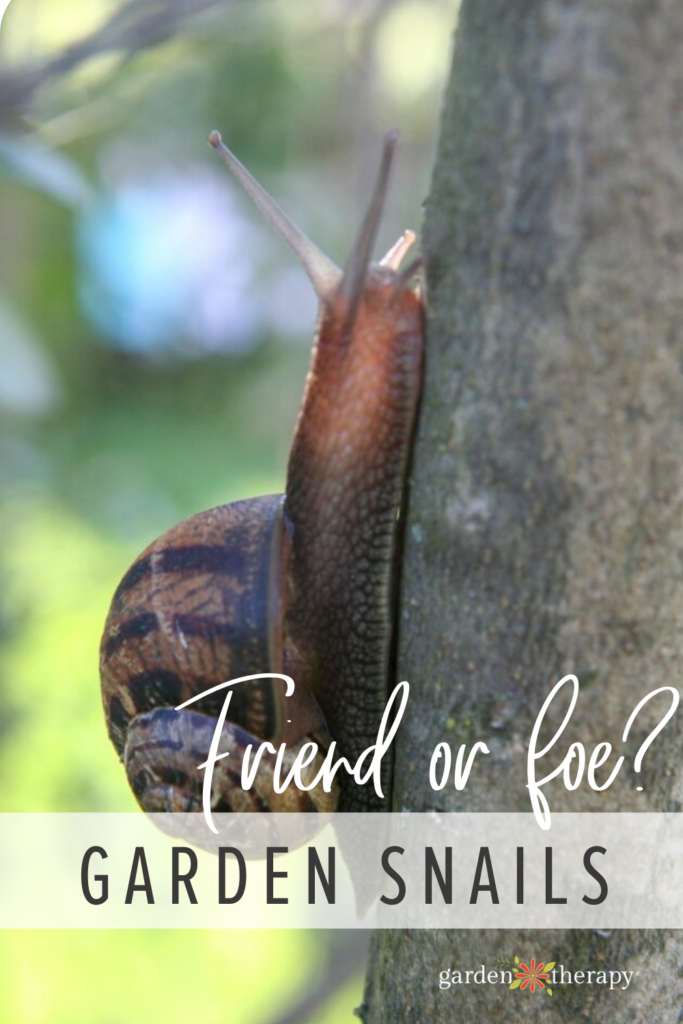



Snails ate most of our broccoli last year :( They would just leave the naked stalks ;(
Snails are cute but they slept in my squash raised garden bed and eat all my flowers from the inside! I had no squash last year because I didn’t think to look inside each flower. They were all huddled inside them. Crazy, I need to try all this ideas for this years garden.
I had 5 of them as pets and we lost our last one today. My son loved them. He was 2 when I found em at the sawmill I work at. Now my son 9, so the las one was actually the first one. And he lived for at least 7 years, more than likely a lot longer than that, because he was fully grown when we found him. I saw him earlier and thought he was cute because I’m 43 now and never saw one around here my entire life, and we have a 365 acre farm. Anyways, my son called him Bean, and I’m pretty sure he is going to be crying when he finds out. Hopefully he doesn’t notice and I can clean the cage up and everything before he comes home from school. I know he wasn’t feeling good yesterday because he wasn’t crawling all over my hand. He was moving, just nothing like normal, so I gave him some lettuce and he was still there today, and his head was dehydrated. I’ve sprayed him with water hoping he is still with us, but I’m thinking it might be the end. I have seen some miraculous things happen before though, so I’m keeping my finger crossed.
I had to get rid of them, I usually let them be when it’s only one or two, but I found like 40 of them hiding under my snapdragons. I started seeing my plants and flowers with holes so, had to say bye bye. I just through them in my front yard in hopes birds come and eat them, I just can’t bring myself to kill them :(.
We have heaps of them with our large garden and many plants everywhere. On rainy nights over the years we grab the kids and we go out with a small salt water buckets, raincoats and flashlight , each and do a collection of slugs and snails , kids love this adventure and make it a competition.